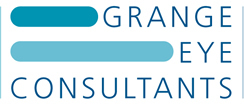What is ReLEx SMILE?
What is ReLEx SMILE and how is it different from LASIK? So there are some
similarities between ReLEx SMILE and LASIK, but there are major differences as
well.
Similarities between ReLEx and LASIK.
The way in which both ReLEx SMILE and LASIK correct the vision is
actually very, very similar. Both of them effectively sculpt the shape of the correct
glasses prescription onto the surface of the eye, into the cornea, to correct your
vision. And it’s just the way in which this is done is technically different between
the two techniques.
Difference between ReLEx and LASIK procedures.
In ReLEx SMILE, this is a keyhole procedure. In LASIK it is an open, flap based
procedure. So in LASIK we create a flap on the surface of the eye which we
open and perform… Almost like open heart surgery, we perform the laser on the
cornea with the flap open and we then replace the flap at the end, like closing the
wound in open heart surgery. With SMILE we effectively do this through a three-millimetre keyhole surgery and the sculpting is performed without needing to open a flap, and using a slightly
different laser. So the type of laser that’s used to do the sculpting is very different
between the two procedures.
Differences between the recovery of ReLEx and LASIK.
In terms of recovery of vision, the recovery of vision in the two procedures is
remarkably similar. Both have strengths, both have drawbacks. The key
strengths of ReLEx SMILE are the fact that the surface of the eye is disturbed far
less and there is far less damage to the nerves in the cornea, so that the patients
tend to have less watering and less dryness of the eye, so less need to use dry
eye drops and less fluctuation of vision.
The slight drawbacks, sometimes, with ReLEx SMILE is that patients, although
the vision is very sharp, they can notice slightly more glare for the first couple of
weeks after surgery. It’s a very minor thing, but we have to balance the strengths and the weaknesses of both techniques and counsel patients, be giving them an honest overview and appraisal of the
strengths and weaknesses of the two techniques.
More about Alex J Shortt
